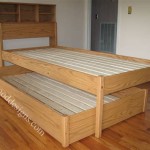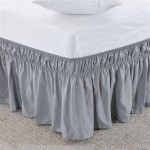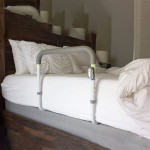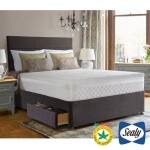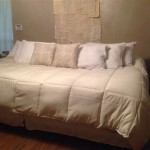Queen Bed Cover Protection: Essential Aspects
Maintaining a pristine and inviting sleeping space requires attention to detail, including the protection of your luxurious queen bed cover. Safeguarding your bed cover not only extends its lifespan but also enhances your overall comfort and hygiene.
This article delves into the essential aspects of queen bed cover protection, exploring the materials, cleaning techniques, storage practices, and additional tips to ensure your bed cover remains a cherished part of your restful sanctuary.
Materials and Durability
The fabric composition of your bed cover significantly influences its durability. Natural fibers like cotton and linen are known for their breathability and softness, but they may require more frequent cleaning. Synthetic materials such as microfiber and polyester offer enhanced wrinkle resistance and stain repellency, making them ideal for busy individuals.
The thread count, which measures the number of threads per square inch, also affects durability. A higher thread count generally indicates a stronger, more durable fabric.
Cleaning Techniques
Regular cleaning is paramount to maintaining the hygiene and longevity of your bed cover. Follow the care instructions on the label carefully. Use gentle detergents and avoid harsh bleaches or fabric softeners, which can damage the fibers.
If your bed cover is machine-washable, select a gentle cycle and use cold water. Line drying or tumble drying on low heat is preferable to preserve the fabric's integrity.
Storage Practices
When not in use, store your bed cover properly to prevent dust accumulation and damage. Fold or roll it neatly and place it in a breathable storage container or bag. Avoid storing it in direct sunlight or humid areas.
If you live in a humid environment, consider adding a silica gel packet or moisture absorber to the storage space to prevent mold and mildew growth.
Additional Tips
In addition to these essential aspects, consider these tips to further enhance the protection of your queen bed cover:
- Use a mattress cover or topper to protect your bed cover from spills and stains.
- Avoid placing sharp objects like jewelry on your bed, as they can snag or tear the fabric.
- Regularly vacuum or shake your bed cover to remove dust and allergens.
- Inspect your bed cover periodically for any tears or loose threads and repair them promptly.
Conclusion
Protecting your queen bed cover requires a multifaceted approach, encompassing the right materials, proper cleaning techniques, careful storage, and additional measures. By adhering to these essential aspects, you can ensure that your bed cover remains a cherished companion for years to come, enhancing the comfort and aesthetics of your sleeping space.

Jphome Queen Size Quilted Fitted Mattress Pad Cover 100 Waterproof Protector Deep Pocket 8 21 Breathable Noiseless Soft And Comfortable 60 X 80 White Com

Waterproof Mattress Protector Queen Size 100 Organic Cotton Hypoallergenic Breathable Pad Cover 18 Deep Pocket Vinyl Free 60 X 80 Com

Waterproof Mattress Protection Cover Breathable Comfortable Noiseless Sheet Style Bed Pillowcase Not Included New Design Dustproof For Twin Full Queen King Unisex Modern Home Decoration Gray White Black Pink Blue Simple

Buy Mattress Protector Coffee Waterproof Cover For Queen Size Bed 75 X 60 Inch At Best S In Jiomart

Waterproof Bamboo Mattress Protector Hypoallergenic Breathable Fitted Bed Covers

Nestl 100 Waterproof Mattress Protector Premium Cotton Terry Bed Cover Fitted Queen Covers Fits Mattresses Up To 16 Inch Com

Double Bed Mattress Cover Protector Cozy Flannel Leaf Printed Protection Pad

Sensorpedic D Cotton Queen Encasement Hypoallergenic Mattress Cover Bed Bug Protection In The Covers Toppers Department At Com

Waterproof Quilted Mattress Cover One Piece Elastic Breathable Bedspread Protection Non Slip Dust Joom

Quilted Mattress Cover Printing Non Slip Fitted Bed Sheet Queen King Dust Protection Buy

